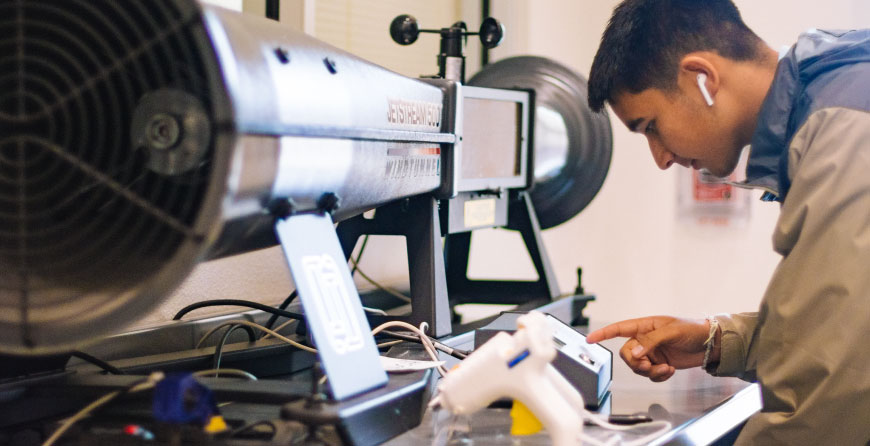The current pandemic forced companies of all sizes to make a quick shift to remote working. Still, there are many unanswered questions. Will this be a passing trend? Will we continue with home offices in the future? Will the traditional office completely become obsolete?
The sudden shift toward working remotely at the beginning of 2021 would have been hard to believe. But remote work has been there for almost a decade, it’s not a fresh concept. The only fact is that remote work penetrated our lives in a massive way after the pandemic.
The traditional workplace is ever-changing and has been quite slow. Several workers take into account their native eating house to be the perfect work atmosphere, whereas ancient company leaders take into account remote work to be a threat to their ability to manage workers.
Risky or not, raised telework appears to represent the accelerating trend. Gallop reports that workers operating remotely a minimum of part-time grew from thirty-nine percent in 2012 to forty-three percent in 2016. Remote work is neither new nor demo-specific, younger generations, especially, are searching for much flexibility.
It’s straightforward to check why you take into account trendy technological conveniences. Conveniences, mind you, that almost all haven’t had access to in their careers and for even later bloomers, in their entire lives. Follow the logic to its natural conclusion, and the inevitable question for this section should therefore be, “Why not?”
What is the perfect work atmosphere anyway!
For the foremost half, today’s employees—especially tech-savvy younger ones— accept this reality. In return, they typically need bigger leeway in however and wherever they work. In several places, remote-work opportunities aren’t any longer simply a luxury choice, they remain a typical feature. We also can’t discount the impact of the atmosphere on manufacturing high-quality or artistic work. These world-traveling staff are usually impressed by the ever-changing landscape and inspiration that pours over into their work product.
That said, remote work isn’t for each person or every organization. One study discovered that fifty-seven of firms still lacked some style of remote policy. For some, the character of the business precludes out-of-office work for sensible, legal, or security reasons. And this is often permitted, it’s not like workers across the board are abandoning their ancient workspaces like sinking ships.
Firms provide a variety of choices from versatile hours, to some days per week out of the workplace, to full-time off-site duty. In any situation, businesses should strike a balance between location leniency and adherence to established expectations to form a perfect work atmosphere that works for them.
It is true that since the start of the pandemic, the abrupt shift within the mode of acting from onsite to offsite has been disagreeable for heaps of individuals. Whereas operating onsite, they are accustomed to having regular physical interactions with their peers and colleagues to keep them engaged and energized. But with off-site operating, everything is modified in their mode of interaction.
To cater to the well-being of remote employees, organizations have started conducting numerous virtual data sessions and social events to keep them engaged and motivated. With the assistance of such events, the staff is organized to catch up with one another and grasp the recent hires.
The management has conjointly started conducting numerous events and workshops on mental well-being where they bring forward stress-relieving techniques to the remote hands. Such techniques facilitate them in addressing their stress as well as enhancing their physical health.
If you endure a company that doesn’t operate out of a secure compound and may afford to contemplate reposeful in-office needs for your individuals, there are every kind of thing to kick around along with your team. Two of the larger ones need to do with worker productivity and work culture.
Remote employee productivity
For many conservative leaders, one of the primary things that will matter, once the subject of remote work surfaces, is the impact on output. Shirking off, general disconnect among teammates, and also the flying of worker development are all common claims in these circles. The reality is, this sort of doom and gloom tends to be unwarranted. Worker productivity doesn’t need to suffer just because work is performed outside of headquarters.
However, flexibility on this scale goes hand in hand with responsibility. Operating remotely in most cases could be a privilege, not a right. And it seems workers are carrying out a pleasant job earning.
Results showed that the work-at-home, non-self-employed population has grown ten times as quickly because of the remainder of the personnel since 2005. Had there been a corresponding uproar over plummeting productivity rates, it’s exhausting to imagine that networking technology is still predicting that a full 500 of the personnel is going to be remote by 2020.
Are you playing with performing remote-work opportunities? Then, embrace these productivity fundamentals in your thought set:
Certify vital technology
There are in fact dozens of tried platforms out there that will support your efforts once it involves inter-office collaboration and remote work. These embrace platforms for communication (Slack), project management (Asana), document sharing (Google Docs), and alternative business functions. All modify period collaboration, automate mundane tasks, thus workers will think about substantive work and nearly eliminate the requirement for in-person project management.
Establish constant check-in
For remote staff, this is frequently the direct thanks to staying awake so far on what’s happening around the company. For managers, it ensures the skills workers are faring, each on deliverables and normally. And don’t simply ruin over text or instant message; seeing faces and hearing voices permits you to select voice inflection and visual communication so that you’ll be able to additionally feel what workers can’t express in oral communication.
Train your remote workers
It is often straightforward to merely assume that a person’s productivity can mechanically transfer from the workplace to the house or restaurant. Sadly, this isn’t continuously the case. To form certain individuals will execute well on their own, show them the way to work. Train them once. It involves acting often to manage expectations, developing routines that support their work-life balance, and even putting in custom-built at-home work stations that best suit their designs.
Build face-time a priority
Long-distance relationships are often fruitful, they simply need a touch and tending on the approach. Prevent the spirit of those events alive throughout the year by developing formal rituals that assist individuals from completely diverse locations face-to-face, like our disreputable Question Friday. The content and frequency of those rituals ought to replicate your values and culture.
Reinforce culture through current connections
In-person conferences and events are vital, however, they’re not continuously convenient, nor are they continuously necessary nowadays. To escape the potential sense of FOMO (fear of missing out) among remote workers, there are alternative ways in which to make them feel they are wanted and have a voice.
Some solutions keep everybody updated on relevant division and company news, which permits the team to celebrate individual milestones and large wins. Worker growth and development should be continuous, with reliable connections.
Remote work culture
The larger and a lot of detaching the business becomes geographically, the more durable it’s to keep up a powerful, cohesive, and pervasive culture. But, at the tip of the day, culture isn’t an area. It’s a mind-set. The company mission, vision, and values, and expectations for the positive operating relationships aren’t spatially certain.
Remote work merely remains another aspect of a speedily evolving business world. Like every alternative aspect, if you wish it to figure, you wish to figure at it. Managers, supervisors, and executives across the world, who have embraced this remote work challenge would agree. Nearly one in four say that worker quality of life has improved, whereas one in five has noted progress in productivity. Ironically, three in five additionally indicated that communication with remote workers was smart or higher than with those in-house.
Remote working has become a new normal now for many organizations due to a global pandemic that reinforced many to work from home. This has changed the trend of interaction that used to exist before pandemics. Now is the age of virtual interaction with colleagues, stakeholders will continue to affect the interaction within business and organization lives. Because it is rightly said that the show must endure in whatever condition one lies into.
Final Thoughts
Among the many things the COVID-19 pandemic exposed are the limitations in the healthcare system, especially in case of a face-to-face model of patient care.
Early during the pandemic, the challenge of protecting patients and essential workers while managing the healthcare needs of individuals proved perilous and exhausting. But it didn’t take long to realize the need of a technology-based patient model for non-emergent care. As health care pivoted, so did businesses of all shapes and sizes. The list included heavily regulated industries like pharmaceutical, medical equipment as well as manufacturing.
The desperation of a pandemic unveiled just how quickly organizational transformation could take place by adopting readily available digital technologies and combining them with the speed of intent. With the adoption of digital technologies like artificial intelligence, process automation, compliance management, health care organizations are able to meet unforeseen demands in record time. They persevered, adapted, and succeeded.
There’s a worldwide belief that the traditional model of health care delivery is now permanently replaced with a hybrid approach of patient-facing care blended with digital transformation. Organizations that recognize the imperative for leveraging and integrating digital solutions to improve operations, remove barriers, and ensure compliance will be better positioned now and into the future.







